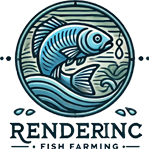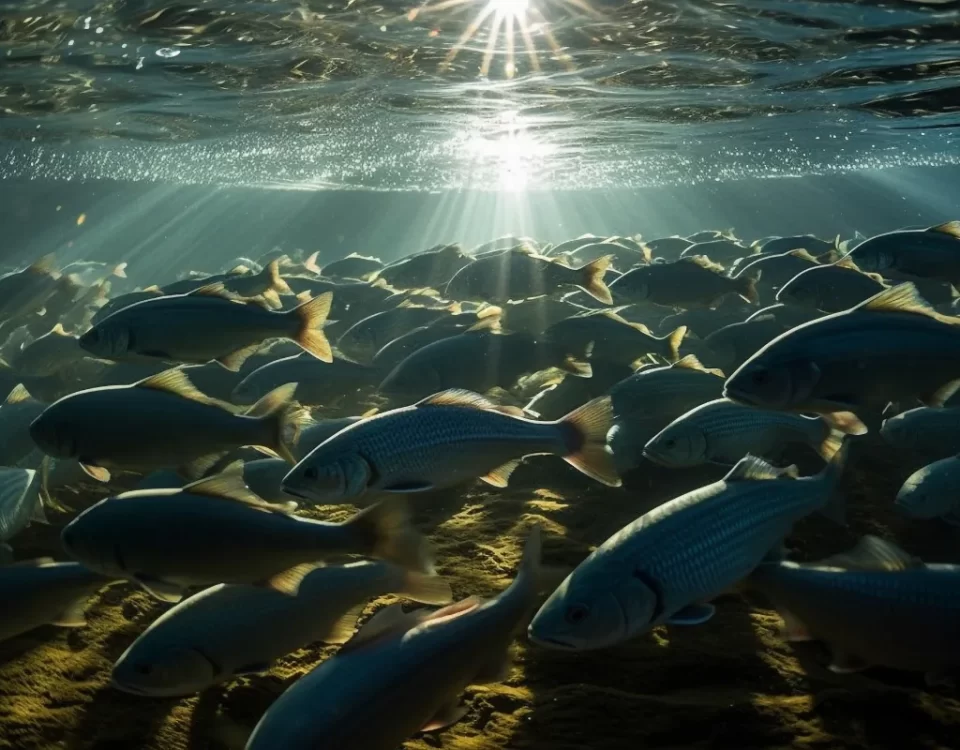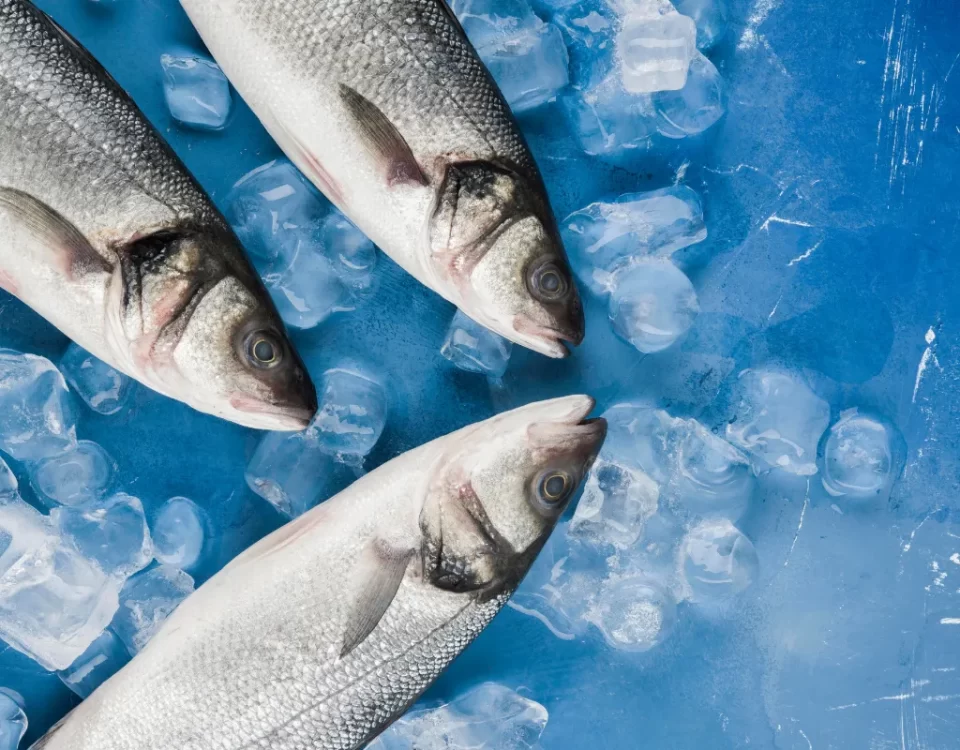How to Create a Sustainable Fish Farm with Limited Resources

Managing Risks in Fish Farming: What Every Farmer Should Know
September 6, 2024
How to Minimize Water Usage in Fish Farming
September 8, 2024In a world where environmental awareness is on the rise, the concept of sustainable fish farming has become increasingly crucial. Sustainable fish farming involves practices that aim to minimize negative impacts on the environment while ensuring the long-term well-being of fish populations. This approach is essential to combat overfishing, protect marine ecosystems, and meet the growing demand for seafood. By adopting sustainable practices, fish farmers can contribute to a healthier planet and secure their own livelihoods for the future.
Creating a sustainable fish farm with limited resources presents a unique set of challenges and opportunities. Limited resources, whether financial, physical, or technical, can be seen as constraints. However, they can also act as catalysts for innovation and efficiency. When resources are scarce, fish farmers are compelled to think creatively, prioritize sustainability, and maximize the use of available means. This not only fosters resilience in the face of challenges but also promotes a model of fish farming that is economically viable and environmentally responsible.
One of the key reasons to focus on sustainability in fish farming with limited resources is to address the escalating pressures on global fisheries. Overfishing, habitat degradation, pollution, and climate change pose significant threats to marine ecosystems and fish stocks. By adopting sustainable practices, fish farmers can help alleviate these pressures and contribute to the restoration and conservation of aquatic environments. Furthermore, sustainable fish farming can enhance the resilience of local communities that depend on fishing for their livelihoods, ensuring a sustainable source of income for generations to come.
In addition, the significance of creating a sustainable fish farm with limited resources lies in the potential for innovation and knowledge sharing. When resources are limited, fish farmers are encouraged to explore alternative methods, technologies, and management practices to achieve sustainability goals. This drive for innovation can lead to the development of cost-effective solutions that can be shared with other fish farmers facing similar challenges. By fostering a culture of collaboration and continuous improvement, sustainable fish farming practices can spread beyond individual farms, benefiting entire communities and regions.
Understanding Sustainable Fish Farming
In today’s environmentally conscious world, sustainable fish farming has emerged as a vital solution to meet the growing demand for seafood while protecting our delicate ecosystems. By definition, sustainable fish farming refers to the practice of producing fish in a way that meets current needs without compromising the ability of future generations to do the same. This approach ensures a balance between environmental stewardship, economic viability, and social responsibility.
The benefits of sustainable fish farming are manifold. Firstly, it helps to address food security issues by providing a reliable source of protein for a growing global population. Additionally, sustainable farming practices promote conservation of natural resources, such as water and land, by optimizing their use and minimizing waste. Furthermore, it supports local economies by creating jobs and fostering resilient communities.
Conversely, unsustainable fish farming practices can have detrimental effects on the environment. Issues such as overfishing, pollution from excess feed and waste, and habitat destruction can lead to the degradation of marine ecosystems. These practices not only harm marine life but also jeopardize the livelihoods of local communities that depend on healthy ocean environments for sustenance and economic opportunities.
Sustainable fish farming plays a crucial role in preserving marine ecosystems by mitigating the negative impacts of conventional fish farming practices. By implementing eco-friendly techniques such as recirculating aquaculture systems (RAS), responsible feed management, and habitat restoration, sustainable fish farms can operate in harmony with nature. This not only safeguards biodiversity but also ensures the long-term health and productivity of our oceans for generations to come.
Assessing Available Resources
When embarking on the journey of establishing a sustainable fish farm with limited resources, it is crucial to meticulously assess the resources at your disposal. The success of a fish farm hinges on a careful evaluation of the essential elements required for its operation. These elements typically include land or water bodies for the farm, fish seed or fingerlings, feed, equipment, labor, and financial capital.
Analyzing Essential Resources
The first step in setting up a fish farm is to identify the key resources needed. Land or access to water is fundamental for constructing ponds or installing tanks. Moreover, acquiring quality fish seed or fingerlings is crucial for initiating the farming cycle. The availability of nutritious feed, whether commercial or locally sourced, directly impacts the growth and health of the fish. Essential equipment such as aerators, nets, and water quality testing kits are indispensable for farm management. Skilled labor and adequate financial resources are also vital for the smooth functioning of the fish farm.
Importance of Efficient Resource Utilization
Utilizing resources efficiently and sustainably is paramount in the realm of fish farming. Efficient resource management not only optimizes productivity but also minimizes waste and environmental impact. By implementing practices such as proper feed management, water recycling, and energy-efficient equipment usage, fish farmers can enhance their operations while reducing costs and conserving natural resources. Sustainability should be at the core of every decision made to ensure the longevity and viability of the fish farm.
Optimizing Limited Resources
In the face of limited resources, creativity and innovation play a crucial role in optimizing fish farming operations. Embracing low-cost techniques like integrated farming systems, where fish farming is combined with other agricultural activities, can maximize resource utilization. Utilizing recycled materials for pond construction, exploring alternative feed sources, and implementing DIY solutions for equipment repairs are practical ways to stretch limited resources. Collaborating with local communities, government agencies, or NGOs can also provide access to additional resources and support for sustainable fish farming initiatives.
Embracing Resource Efficiency for Sustainable Growth
In conclusion, a comprehensive assessment of available resources sets the foundation for a successful and sustainable fish farming venture. By prioritizing efficient resource utilization, exploring innovative strategies, and collaborating with stakeholders, fish farmers can overcome limitations and create a thriving operation with long-term viability. Balancing economic efficiency with environmental stewardship is key to achieving sustainable growth in the dynamic landscape of fish farming.
Selecting Suitable Fish Species
When embarking on the journey of creating a sustainable fish farm with limited resources, one of the crucial decisions is selecting the most suitable fish species. This decision will heavily influence the success and sustainability of your aquaculture venture. To make an informed choice, thorough evaluation of different fish species is essential.
Evaluating Different Fish Species
Before finalizing your selection, it is imperative to evaluate various fish species available for freshwater or marine aquaculture. Consider factors such as growth rate, nutritional value, and environmental impact of each species. Some species may grow rapidly but require intensive feeding and care, which might not be feasible with limited resources. On the other hand, certain species may be more resilient and able to thrive in varying conditions.
Importance of Growth Rate and Nutritional Value
Growth rate plays a significant role in determining the profitability of your fish farm. Opt for species that exhibit a rapid growth rate while maintaining good flesh quality. Additionally, consider the nutritional value of the fish species. Choose those that provide high-quality protein and essential nutrients to meet market demands and ensure consumer satisfaction.
Environmental Impact Considerations
In the era of sustainability, it is crucial to assess the environmental impact of the fish species you intend to farm. Opt for species that have a low environmental footprint and do not contribute to ecological disturbances. Avoid species that are known to be invasive or can negatively impact native ecosystems. Look for species that can thrive with minimal environmental inputs and have a low feed conversion ratio to maximize resource utilization.
Resilience and Adaptability to Limited Resources
Given the constraints of limited resources in your fish farming operation, selecting fish species that are resilient and adaptable is paramount. Choose species that can withstand fluctuations in water quality, temperature, and feed availability. Resilient species are more likely to thrive in challenging conditions and are less prone to diseases, reducing the need for costly interventions. In conclusion, by carefully selecting fish species that align with sustainability goals and resource constraints, you can lay a strong foundation for a successful and economically viable fish farming venture.
Designing an Efficient Farming System
When embarking on the journey of creating a sustainable fish farm with limited resources, designing an efficient farming system is paramount. The key components of such a system include ponds, tanks, and recirculating aquaculture systems (RAS). Each of these components plays a crucial role in maintaining the health and productivity of the fish farm.
Components of a Sustainable Fish Farming System
Ponds are one of the most traditional yet effective components of a fish farming system. They provide a natural environment for fish to thrive, mimicking their natural habitat. Proper design, including size, depth, and water quality management, is essential for the success of pond-based fish farming.
Tanks, on the other hand, offer more control over the environment and stocking density of fish. They are particularly useful for small-scale fish farming operations with limited space. Tanks can be customized to meet specific needs, such as water flow, aeration, and filtration systems, ensuring optimal conditions for the fish.
Recirculating aquaculture systems (RAS) are a more advanced and resource-efficient option for fish farming. RAS allow for the re-use of water within the system, minimizing waste and reducing water consumption. Although RAS may require a higher initial investment, they often result in higher productivity and lower environmental impact in the long run.
Guidelines for Designing a Cost-effective System
When designing a sustainable fish farming system with limited resources, it is essential to prioritize cost-effectiveness and resource efficiency. Consider utilizing local materials and resources whenever possible to reduce expenses. Opt for simple yet effective designs that are easy to maintain and repair.
Proper planning is key to designing a cost-effective system. Conduct a thorough site assessment to determine the best location for your fish farm, taking into account factors such as sunlight exposure, water source, and accessibility. Develop a detailed farming plan that outlines stocking density, feeding regimen, and a maintenance schedule to ensure the smooth operation of the farm.
Importance of Planning and Maintenance
Proper planning and maintenance are crucial for the success of a sustainable fish farm. Regular monitoring of water quality, fish health, and equipment functionality is essential to prevent issues and optimize productivity. Implementing best practices for feeding, stocking, and waste management can help minimize resource wastage and environmental impact.
By designing an efficient farming system and adhering to proper planning and maintenance practices, you can create a sustainable fish farm with limited resources that not only benefits your business but also contributes to environmental conservation and food security.
Implementing Sustainable Practices
Sustainable fish farming is essential for the long-term health of the environment and the industry itself. Implementing sustainable practices such as water conservation, waste management, and energy efficiency can make a significant difference in the overall sustainability of a fish farming operation.
Water Conservation
Water is a precious resource in fish farming, and conserving it is crucial for sustainability. Implementing water-saving techniques such as recirculating aquaculture systems (RAS) can significantly reduce water usage. RAS systems allow for the reuse of water within the farm, minimizing the need for large water intake and discharge. Additionally, monitoring water quality regularly can help prevent unnecessary water wastage due to poor management practices.
Waste Management
Proper waste management is another key aspect of sustainable fish farming. Recycling and reusing waste products such as fish excrement and uneaten feed can help reduce environmental impact. Implementing biofiltration systems can also help convert harmful waste products into useful byproducts, such as fertilizer for crops. By managing waste effectively, fish farmers can minimize pollution and improve the overall sustainability of their operations.
Energy Efficiency
Energy consumption in fish farming can be significant, but implementing energy-efficient practices can help reduce carbon footprint. Utilizing renewable energy sources such as solar panels or wind turbines can help lower reliance on fossil fuels and decrease greenhouse gas emissions. Additionally, optimizing feeding practices and maintaining equipment properly can help save energy and reduce operational costs.
Benefits of Eco-Friendly Practices
Incorporating eco-friendly practices in fish farming operations offers various benefits, not only for the environment but also for the long-term viability of the farm. By promoting sustainable practices, fish farmers can improve water quality, reduce waste production, and enhance resource efficiency. Moreover, consumers are increasingly demanding sustainable products, and implementing eco-friendly practices can help fish farmers meet market expectations and stand out as environmentally responsible businesses.
Overcoming Challenges and Obstacles
Creating a sustainable fish farm with limited resources can present a myriad of challenges that require innovative solutions and steadfast determination. From financial constraints to regulatory hurdles, farmers embarking on this journey often face an uphill battle. However, with careful planning and strategic approaches, these obstacles can be overcome, leading to the establishment of successful and thriving sustainable fish farms.
Common Challenges Faced
One of the most prevalent challenges faced when establishing a sustainable fish farm with limited resources is financial constraints. The initial investment required to set up an aquaculture operation, including tanks, equipment, and fish stock, can be significant. Additionally, ongoing operational costs such as feed, maintenance, and utilities can strain a farmer’s budget, especially when resources are limited. Regulatory hurdles also pose a challenge, as navigating complex laws and compliance requirements can be daunting for newcomers to the industry. Issues such as obtaining permits, meeting environmental standards, and ensuring proper waste management can be time-consuming and costly.
Solutions and Strategies
To address financial constraints, farmers can explore various strategies to reduce costs and maximize resources. This may include sourcing affordable or recycled materials for infrastructure, implementing energy-efficient practices to lower utility bills, and diversifying income streams through value-added products or agritourism activities. Collaborating with local organizations or seeking government grants for sustainable farming initiatives can also provide much-needed financial support. When facing regulatory hurdles, thorough research and diligent planning are essential. Building strong relationships with regulatory agencies, seeking guidance from experienced aquaculture professionals, and staying informed about industry updates can help farmers navigate the regulatory landscape effectively.
Success Stories
Despite the challenges, many farmers have successfully overcome obstacles to establish sustainable fish farms that thrive in the long run. By innovating and adapting to changing circumstances, these farmers have demonstrated the resilience and creativity necessary to succeed in this industry. Examples include a small-scale farmer who implemented integrated aquaponics systems to maximize resources and minimize waste, leading to increased efficiency and productivity. Another success story involves a cooperative of fish farmers who pooled their resources to invest in sustainable practices and collaborative marketing, resulting in improved profitability and environmental impact.
By learning from these success stories and applying strategic planning and resourcefulness, aspiring fish farmers can overcome challenges and obstacles to create sustainable operations that benefit both the environment and their livelihood.
Monitoring and Evaluating Farm Performance
In the realm of sustainable fish farming with limited resources, monitoring and evaluating farm performance is not just a luxury but a necessity. Those who seek to establish a thriving fish farm must prioritize the meticulous tracking of key performance indicators to ensure the health and efficiency of their operations. By embracing a mindset of continuous improvement through data-driven insights, fish farmers can overcome resource constraints and pave the way for long-term success.
Importance of Monitoring Key Performance Indicators
Fish growth, water quality, and resource utilization stand as pivotal metrics that demand diligent observation. Tracking the growth of fish not only provides insights into their overall health but also aids in optimizing feeding regimes and detecting any potential issues early on. Maintaining pristine water quality is crucial for the well-being of aquatic life and necessitates regular monitoring to prevent detrimental impacts on fish health. Efficient resource utilization, such as feed efficiency and energy consumption, directly influences the sustainability and cost-effectiveness of the farm.
Role of Data Analysis in Optimizing Operations
Data analysis serves as a powerful tool in the arsenal of a sustainable fish farm. By embracing the insights gleaned from data, farm operators can uncover trends, identify areas for improvement, and make informed decisions to enhance overall performance. From analyzing growth trends to evaluating water quality parameters, leveraging data enables fish farmers to optimize operations, reduce waste, and maximize productivity with limited resources.
Guidance on Implementing a Monitoring and Evaluation System
Establishing a robust monitoring and evaluation system is the cornerstone of a sustainable fish farm. By defining clear key performance indicators and implementing a systematic data collection process, farmers can track progress, detect inefficiencies, and pivot strategies accordingly. Leveraging technology, such as sensors for water quality monitoring and software for data analysis, can streamline the monitoring process and empower farmers with real-time insights to drive informed decision-making.
Tracking Progress for Sustainability
Embracing a culture of continuous improvement through monitoring and evaluating farm performance is not just a best practice but a requisite for building a sustainable fish farm. By tracking key metrics, analyzing data, and adapting strategies based on insights, resource-constrained fish farmers can navigate challenges effectively and foster a thriving, environmentally conscious operation poised for long-term success.
Sustainable fish farming with limited resources is not just a passing trend but a crucial necessity in today’s world. As we face depleting natural resources and escalating environmental challenges, it is imperative that we adopt practices that are not only economically viable but also environmentally conscious. By embracing sustainability in our fish farming operations, we are not only securing our own future but also contributing to the well-being of the planet as a whole.
It is time for us, as fish farmers and guardians of the environment, to take a stand and embrace sustainable practices wholeheartedly. The journey towards creating a sustainable fish farm with limited resources may seem daunting at first, but the rewards are immeasurable. By thinking creatively and making the most of the resources at hand, we can pave the way for a more sustainable future for our industry and beyond.
Let us not underestimate the power of individual action when it comes to sustainable fish farming. Each small step we take towards sustainability can have a ripple effect, influencing others in the industry to follow suit. By starting our own journey towards sustainable fish farming, we are not only setting an example for our peers but also inspiring future generations to prioritize environmental stewardship in all their endeavors.
In closing, let us not forget the profound impact that sustainable practices can have on the environment and the well-being of future generations. By making conscious choices today, we are laying the foundation for a world where harmony between human activities and nature is not just a dream but a reality. So, let us rise to the challenge, take action, and embark on the path towards creating a sustainable fish farm that will benefit not only us but also the generations to come.

Michael Rivers is an experienced aquaculture enthusiast with over a decade of hands-on knowledge in fish farming and sustainable aquatic systems. Passionate about promoting eco-friendly practices, he shares his expertise on fish breeding, water management, and the latest advancements in aquaculture technology. Through his blog, Michael aims to help both beginners and seasoned fish farmers achieve success in their ventures while contributing to the growth of sustainable food production.




